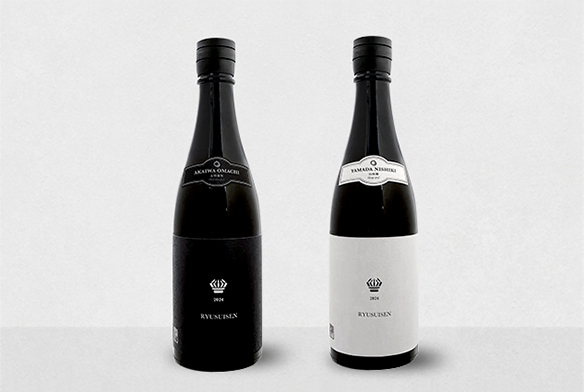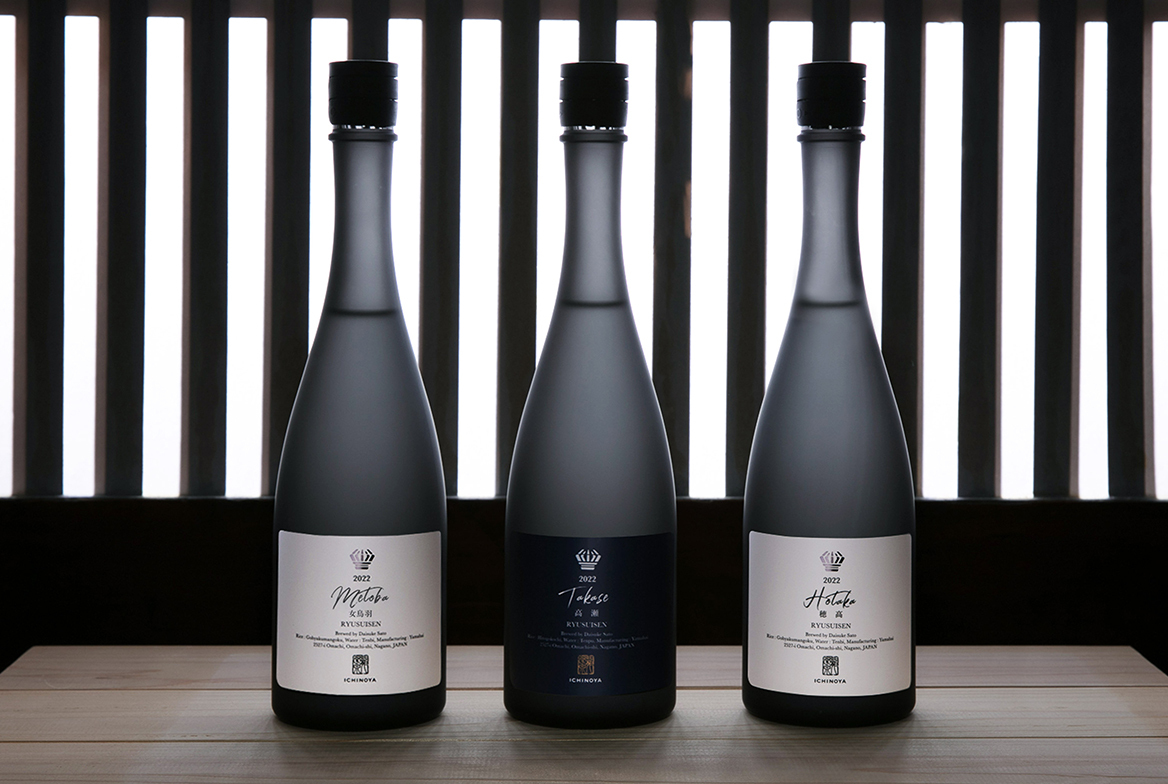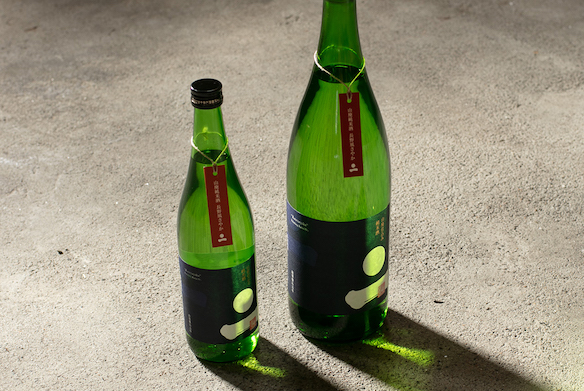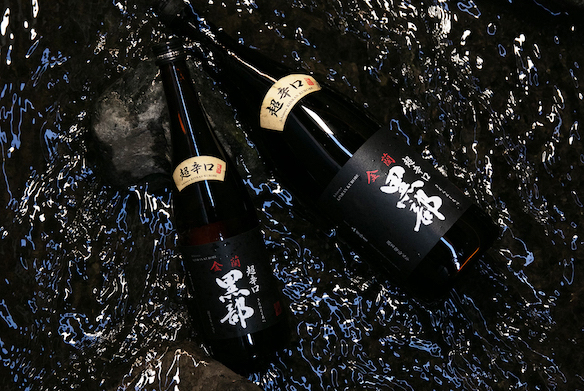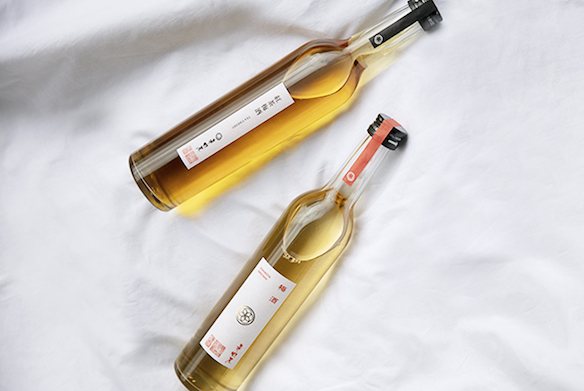Our Brewing PolicyPromise
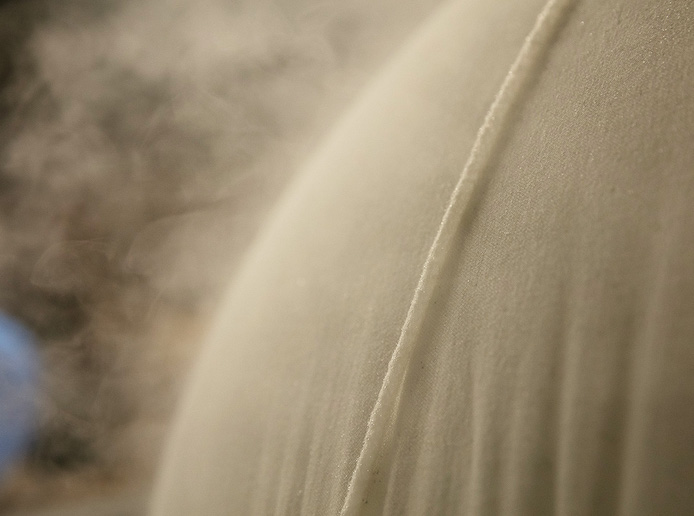
Sensitivity, water, rice, and human hands. And again, sensitivity.
First, there is Ichinoya's desire. The rice is selected from the best rice producers each year, and the water is pure from the beautiful soil. After the "ingredients" for sake are gathered at our brewery, human hands and sensitivity come to life. Rice polishing, washing, steaming, koji making, and sake mother yeast starter making. Sake mash, brewing, filtration, hi-ire, and storage. The brewer's handiwork is used in every step of the process, and the Toji's sensibility creates the one and only sake. Sake brewing with water, rice, and human hands. Respect for the wisdom of our predecessors and trust in the sensitivity of the Toji and brewers of today. This is the essence of Ichinoya's sake brewing.
Water
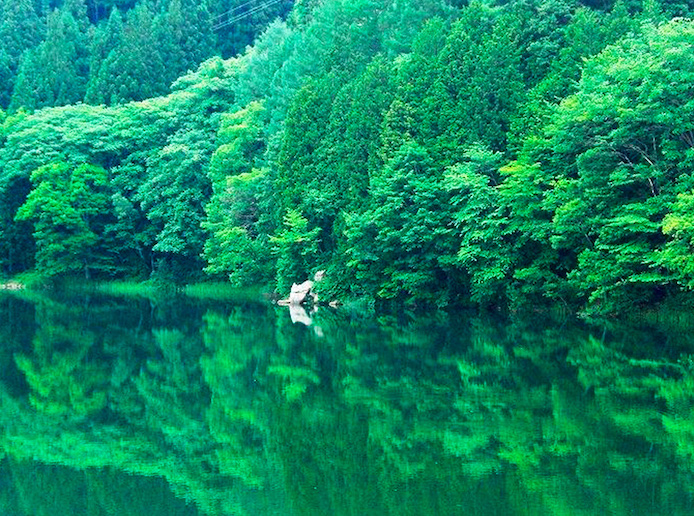
The water that flows here has many different colors, even though it appears to be the same clear water. There are eight water sources, including the Iyasato water source, the Yazawa water source, and the Kamishirasawa water source. First-class rivers such as the Chikuma River, Tenryu River, Saigawa River, and Kiso River, which bring moisture to human villages. The three lakes of Nishina. The water that has been produced over an extended period of time and through various mountain surfaces is soft, hard, dignified, and sweet, and expresses various tastes. What a luxury to be able to choose water. To be able to choose means to have a will. This pure water gives form to Ichinoya's will.The water that flows here has many different colors, even though it appears to be the same clear water. There are eight water sources, including the Iyasato water source, the Yazawa water source, and the Kamishirasawa water source. First-class rivers such as the Chikuma River, Tenryu River, Saigawa River, and Kiso River, which bring moisture to human villages. The three lakes of Nishina. The water that has been produced over an extended period of time and through various mountain surfaces is soft, hard, dignified, and sweet, and expresses various tastes. What a luxury to be able to choose water. To be able to choose means to have a will. This pure water gives form to Ichinoya's will.
Rice
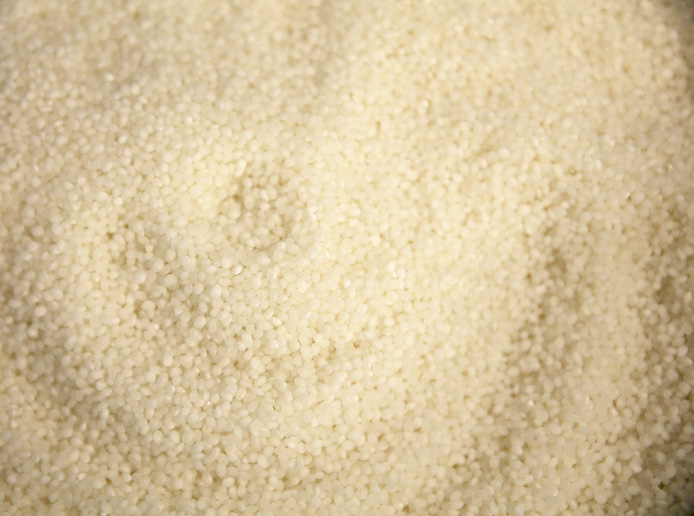
Wherever there is clear water flowing, there is good rice. From north to south, there are "rice-producing areas" in "water-producing areas. In Nagano, where Omachi City is located, beautiful water flows from the mountains of the Northern Alps and goes down into the mountainous terrain to form a fan, creating fertile soil where grasses and flowers bloom and insects play. The city also produces several brands of sake, including "Yamadanishiki," "Hitogochiki," "Miyamanishiki," "Yamae Nishiki," "Kazasayaka," and ....... Looking at Japan from the sky, there are rice farmers from the north to the south who continue their quest to produce delicious rice. We believe that there is more than one solution for rice when it comes to the sake concept we have in mind. We want to select the best rice from each year by checking with our eyes, nose, mouth, and hands, and imagining how the rice will harmonize with water. This is how we finally come close to the work of art we envision.Wherever there is clear water flowing, there is good rice. From north to south, there are "rice-producing areas" in "water-producing areas. In Nagano, where Omachi City is located, beautiful water flows from the mountains of the Northern Alps and goes down into the mountainous terrain to form a fan, creating fertile soil where grasses and flowers bloom and insects play. The city also produces several brands of sake, including "Yamadanishiki," "Hitogochiki," "Miyamanishiki," "Yamae Nishiki," "Kazasayaka," and ....... Looking at Japan from the sky, there are rice farmers from the north to the south who continue their quest to produce delicious rice. We believe that there is more than one solution for rice when it comes to the sake concept we have in mind. We want to select the best rice from each year by checking with our eyes, nose, mouth, and hands, and imagining how the rice will harmonize with water. This is how we finally come close to the work of art we envision.
Yeast
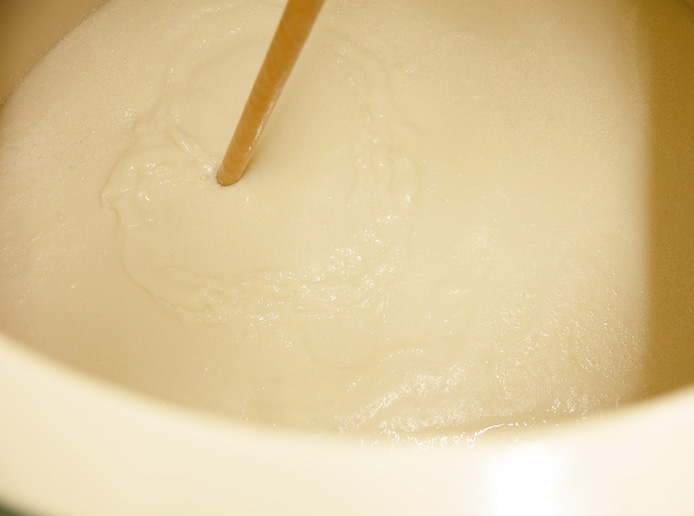
Sake is only born when koji mold produces sugar from rice and yeast converts that sugar into alcohol. The aroma and refreshing sourness produced during the fermentation stage are also the result of the yeast's action. In other words, the yeast makes the difference in the taste of sake. The sake is handmade because it is the essence of Ichinoya. The sake yeast starter is made from steamed rice, koji, and water, and the lactic acid bacteria produced from the yeast starter are used to nurture the yeast. Water and rice. He pays homage to water and rice, the power of nature, and the wisdom of his predecessors.Sake is only born when koji mold produces sugar from rice and yeast converts that sugar into alcohol. The aroma and refreshing sourness produced during the fermentation stage are also the result of the yeast's action. In other words, the yeast makes the difference in the taste of sake. The sake is handmade because it is the essence of Ichinoya. The sake yeast starter is made from steamed rice, koji, and water, and the lactic acid bacteria produced from the yeast starter are used to nurture the yeast. Water and rice. He pays homage to water and rice, the power of nature, and the wisdom of his predecessors.
Brewer
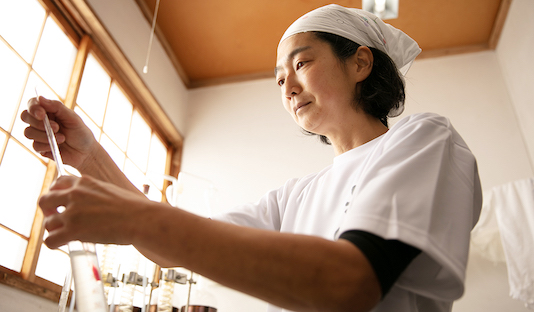
GM of Production Headquarters / Noto Toji
Masakazu Ito
Born in Gifu Prefecture in 1972. After graduating from university, he joined Hosokawa Sake Brewery in Kuwana city, Mie Prefecture in 2000. After working there for 10 years, he worked as a Toji at breweries in Shizuoka and Yamanashi Prefectures. 2019, he became the Toji at Ichinoya. His philosophy is to "make sake like a doctor looking at a person's body. Just as a good doctor looks at a person's physical condition not only through data and numbers, but also through facial color and facial expression, he does not rely solely on mechanized analysis, but uses his eyes, nose, and mouth to assess the state of the unrefined sake. The secret to keeping his sensitivity rust-free is to keep his own body healthy. During his college years, he trained in Shorinji Kempo, and he still makes it a habit to keep in shape every day.

Toji
Maho Otsuka
Born in Yokohama City, Kanagawa Prefecture in 1975. Graduated from Zeze High School in Shiga Prefecture and completed a master's degree at Kyoto University's Graduate School of Agricultural Science. In 2000, she joined the brewery Shotoku Shuzo in Fushimi, Kyoto. She was attracted to the traditional method of sake making established in the Edo period (1603-1868) and revived it, while also designing labels and bottles, for which she received numerous awards. In 2022, she joined Ichinoya, where she is in charge of the Kimoto sake brewing process. Pursuing a modern Kimoto that is widely accepted by people in Japan and overseas, young and old, men and women of all ages, she pursues the creation of "sake that naturally makes you want to have another drink". She is a good mother of two children at home.
